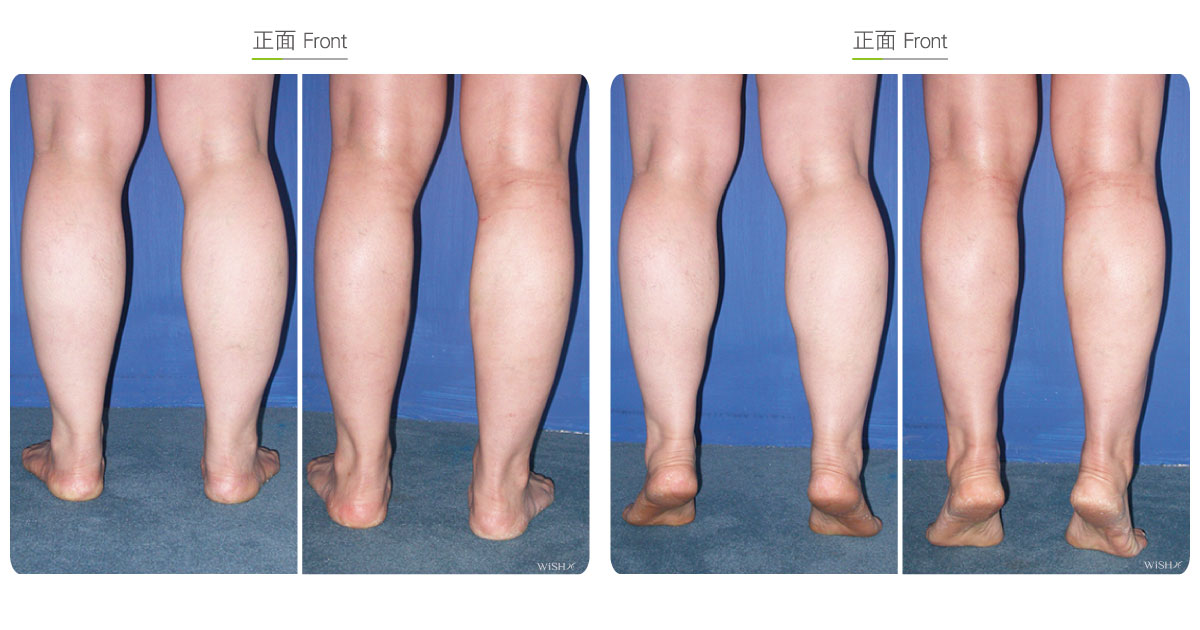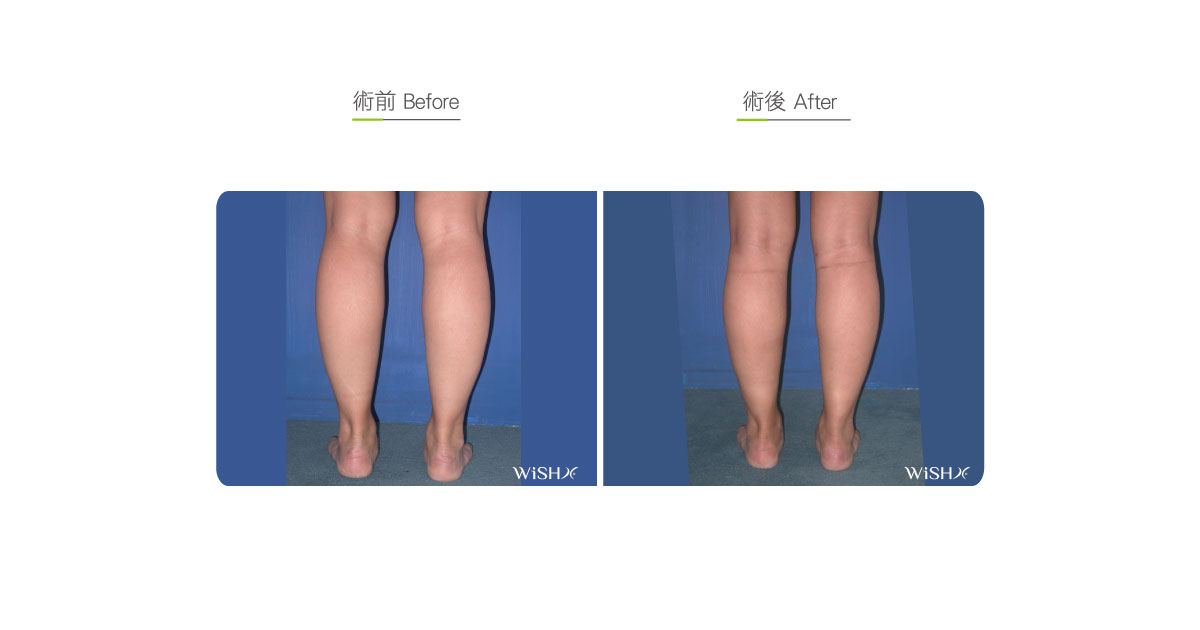Calf Liposuction
The calf volume and shape are mainly determined by the skeletal framework and muscles, and subcutaneous fats only account for less than 20%, which, similar to fats at the back, are mostly superficial. Therefore, single liposuction only achieves the limited effects of calf slimming and should be combined with other calf reduction surgeries (such as selective nerve blocking) to attain ideal results. Currently, calf liposuction is primarily used to treat patients with a congenitally bulky leg shape such as an elephant or a tubular leg, and it utilizes the exquisite Ultra-Z liposuction machine to maximally remove superficial fats at specific areas (such as the superior ankle or posterolateral calf) and sculpt muscle curvature, thus achieving the graceful shape of the calf. This surgery involves the creation of a 0.5-cm incision at the posterior knee and ankle. Via the incisions, Dr. Chuang first infuses hemostatics and painkillers and inserts a thin ultrasonic lipolysis tube under the skin to vibrate and emulsify the fats and homogenously suction them. Liposuction is mostly confined to the posterior two-third circle of the calf and should avoid the anterior one-third region to not cause skin injury or depression. Because this surgery is mainly aimed at sculpting the leg shape rather than slimming the leg, the amount of fats removed is not abundant (which is approximately 100–150 cc on average at each side), and patients need to wear compression stockings for 2–3 months postoperatively till the final leg shape is achieved.
Surgical conditions
Duration
- Type of anesthesia: General anesthesia
- Type of incision: A 0.5-cm incision at the superior (posterior knee) and inferior (ankle) calves
- Recovery: 5–7 days
- Removal of stitches: 7 days
General instructions
No food and water on the day of surgery
- Avoid running, other activities of the lower limb, or work for 1 week postoperatively.
- Try to avoid standing for a long time for 1 month postoperatively to facilitate the subsidence of swelling.
- Wear compression stockings for 3 months postoperatively to help sculpt the leg shape.
Ideal candidates
- Patients with an elephantine leg congenitally prone to edema
- Those with a brawny and fat calf like a pencil vase
- Those with a congenitally thick ankle or poor curvature of the lower leg
- Those with calf obesity and concurrent muscular thunder hypertrophy (it may be treated along with calf muscle reduction)
Possible complications
- Skin unevenness
- Depression
- Muscular line
- Pigmentation (temporary)
- Results short of expectation
Surgical advantages
-
It is a relatively small surgery and quite safe.
-
It is able to partially improve chronic calf edema.
-
It is able to effectively sculpt the leg curvature.
-
It is able to enhance the leg slimming effects of calf muscle reduction.
Surgical drawbacks
-
The amount of fats removed is small, and the leg slimming effect may not be obvious.
-
Excess liposuction may make the muscular texture more obvious.
-
The poor blood circulation of the lower limb may extend the swelling or recovery period.
-
It is prone to induce skin unevenness or depression.


